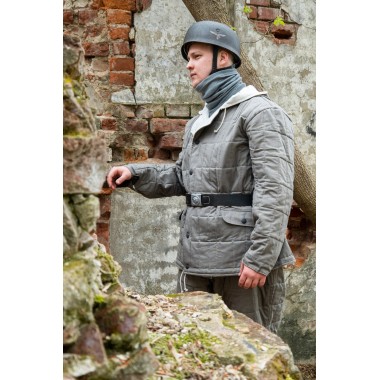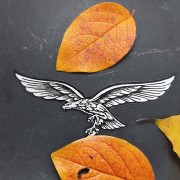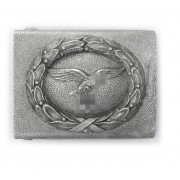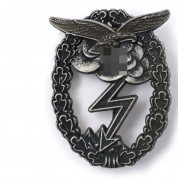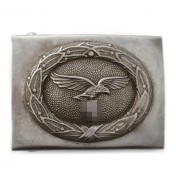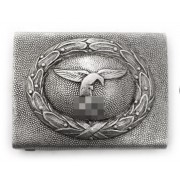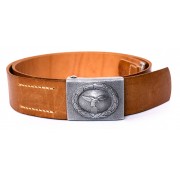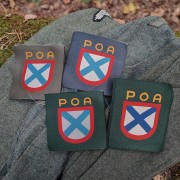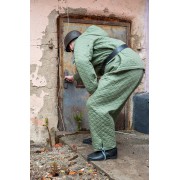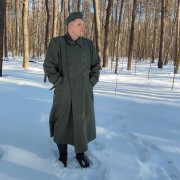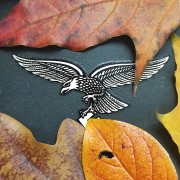How to choose the size?
In the product photo: size II (medium) is worn on a person who usually wears Russian size 54 or XL, 2XL. Height 187 cm, chest 105 cm, girth 96 cm. The parka is worn over a thin pullover, without a field jacket.
The size of the jacket fits the size of the pants, that is, the jacket and pants must be bought in the same size. If you wear a tunic of size L, then you need to buy a winter jacket L (that is, size II), you should not add the size "for the winter", everything has already been added. When size increases, the height also increases, this affects the length of the sleeves, for pants — the length of the legs. German winter jackets were of three sizes: small, medium and large; we did the same. German winter jackets are made wide enough not to fetter a soldier and to fit different body-shapes; this must be understood if you are not buying a jacket for reenactment, but for civilian use.
You can choose the size without trying. You will need a flexible meter or at least a rope. Measure a similar winter jacket that suits you. Designations:
• Chest around — the recommended bare chest girth for a given jacket size (taking into account that you will wear it over a sweater and tunic); in brackets there is the maximum girth of the chest, which will fit into a jacket of this size (without a sweater and tunic).
• Plain chest — of the jacket under the armpits when the waistband is completely loose.
• Sleeve length — from the shoulder seam down in a straight line.
• Back height — from the hood bottom stitch down in a straight line.
• Shoulder — from hood bottom to the sleeve seam.
• The width of the shoulders — between the sleeves' seams along the shoulder seams, behind the neck.
| Size of the parka | Suitable size RUS/EUR (INT) | Chest around | Plain chest | Sleeve length | Back height | Shoulder | The width of the shoulders |
| I | 46-50 (S-L) | up to 100 (110) | 66 | 60 | 75 | 17 | 53 |
| II | 52-54, L-XL | up to 110 (120) | 70 | 64 | 78 | 19 | 57 |
| III | 56-58, 2XL-3XL | up to 120 (130) | 74 | 68 | 81 | 21 | 62 |
If you do not understand the table and you need help, write or call us, we will help you choose the size.
You can choose the size that is in stock. If the required size cannot be selected, then it is (already) out of stock.
Description
Shipping of this jacket is free worldwide! Please note that most other stores do not deliver for free! With all this, the cost of our jacket remains lower than that of competitors (with the certainly high level of copying). Please note that free shipping has conditions (certain payment methods and delivery method). To get the free shipping, you need to select it in the shopping cart at checkout).
This product is a quilted jacket (without complete pants). We have very few such jackets, other sizes are not expected yet. Sets (jacket+pants) you can also buy, see the related products at the bottom of the page. The pants are not sold separately at the moment.
The parka is made of natural fabric with linen weaving (cotton duck, such as a tent). Such fabric protects from wind and water the best. The fabric has an invisible and imperceptible water-repellent impregnation on the white and camouflage side. The rain slithers down from it. The product photo shows how water behaves on the fabric.
The white color of the fabric does not have a blue tint and is something between white and harsh (the color of unpainted fabric, ivory colour). Our white color repeats the shade that existed in the mid-twentieth century, when modern bleach was not yet used. Perfectly masks in the snow.
The grey color is dyed to order especially for these suits! This is a very pale purple-gray color, which appears gray in poor light, and in good light either bluish-gray or greenish-gray, depending on the lighting. Winter suits of the Luftwaffe gray could be sewn from different shades: from expressive gray-blue to indistinct gray. Winter suits of the Luftwaffe were the least monotonous by comparison to the Heer and the SS. Another popular color for Luftwaffe winter uniforms is green. We used it for suits with a diamond stitch.
Inside the insulation from recycled clothing is used, as it was in the originals. The Germans collected the old uniforms, as well as civilian clothes (including trophy and confiscated) and recycled it, getting a cloth like a loose blanket. The composition of such insulation varied due to the heterogeneity of the raw materials. In general, winter suits were not very warm. They had to be worn over a shirt, a cloth uniform and a sweater (a multilayer military uniform system is used to date). In a full suit, it is comfortable down to -15 degrees Celsius, however, this is not enough for guard duty (long inactivity), for this there were a special overcoat and guard boots.
The parka is made after the model of serial jackets, that is, without a tie at the waist, with a simpler hood shape, with standard metal buttons (on both sides). These began to be produced at the end of 1943, in preparation for the winter of 1943/44. However, this jacket has a lot of differences from its army counterpart. Luftwaffe jackets have tucks on the front of the shoulders. This allows the jacket to fit better when the person is slouched (a common position when carrying heavy loads). The Luftwaffe jackets have interesting drawstrings position on the bottom edge, their ends come in one point so they can be tied without making a crease. The channel for the drawstring is different from the one on the Heer jacket. In the Luftwaffe, also the cuff is arranged differently.
The stitching is made in the form of vertical rectangles. This stitching was used on a par with the diamond stitch, however, some reenactors consider it "secondary" and later model. The stitching itself has a purely economic function: it allows you to use a less stable (and cheaper) insulation. From the point of view of insulation, the stitch gives only disadvantages. But the Luftwaffe decided this way.
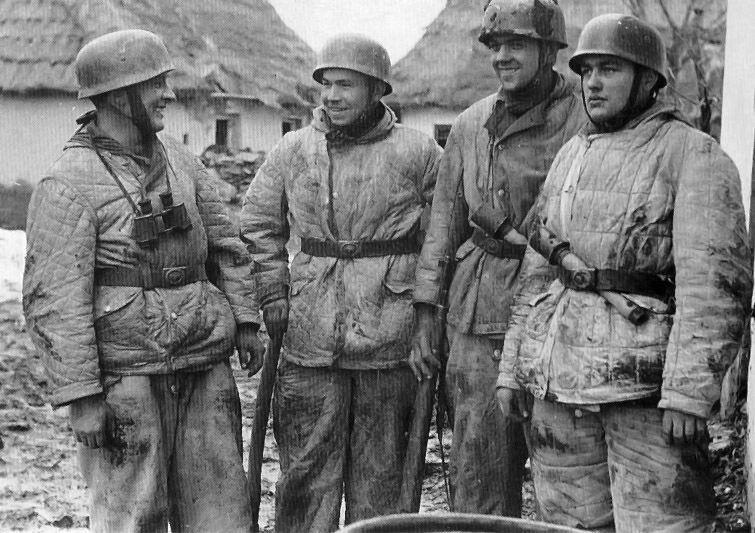
The famous photo of the Luftwaffe paratroopers in winter uniforms shows that the troops' intendants did not care of stitching types. Soldiers of the same unit could wear different winter uniforms. The two soldiers on the left have a diamond stitch, the next one on the right is wearing what looks like a Heer winter kit, and the one on the far right is wearing a suit with a rectangular stitch.
Jacket pockets 4-pointed, as in the Heer, but they have a different shape of the flap and a different pocket arrangement (cheaper to produce than the Heer).
These jackets have ink stamps of the manufacturer (company name + city) and size (numbers 1, 2 or 3, respectively).
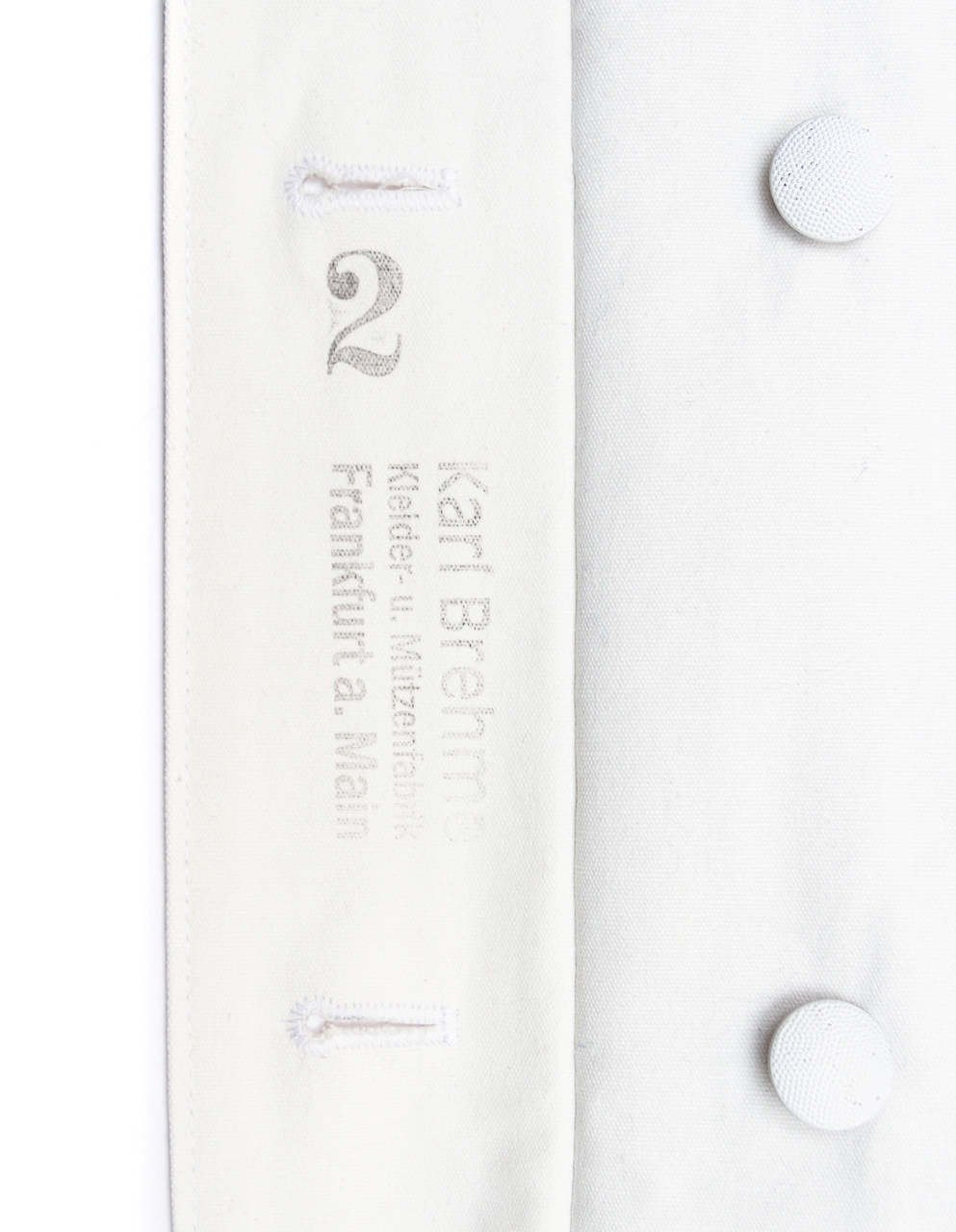
How to care for the product?
The soldiers at the front did not have the opportunity to wash their jackets (especially in the washing machine). After the winter (or in the case of taking the unit to rest in the deep rear), they handed the winter uniform over, and the rear services cleaned, sorted and stored it. Therefore, washing the winter uniform in the washing machine is an extreme measure. To get started, you just need to wash the jacket with a sponge or a soft brush with soap or detergent for natural fabrics in those places where it is dirty (usually this is the neck and cuffs). You can wash off the detergent with a jet of water (shower in the bathroom, for example).
The use of bleach (stain remover) is permissible only manually on the white side and on a dry jacket. So you can return the whiteness to the cuffs and other dirty areas. However, if bleach seeps onto the dyed side (for example, through a seam), white spots will forever remain. It is unacceptable to wash the entire jacket in bleach!
Washing a jacket is the removal of contaminants from external surfaces; inside the jacket there is nothing to wash. If you decide to save time and wash in a machine, then select the delicate washing mode at a temperature of no higher than 40 degrees. The jacket will not deteriorate, the color will not fade, however, the jacket will slightly lose its shape and will no longer look like new.
Please remember that the water-repellent properties of the fabric are lost after several washes.
Historical reference.
The SS fur parka was designed as a uniform for the polar regions, and there it was tested. The first model was shorter and had a hood of smaller volume. It differed in some minor details too. The new model (the longer one) appeared on the front in winter 1942/43. A lot of photos of SS soldiers in this uniform taken during the fighting for Kharkov, so 2nd model parkas often called "Kharkov parka".
After studying the experience of using the 2nd model parkas, the SS decided to make it with front completely open, with buttons from up to the bottom. This simplified the process of dressing and allowed to wear it open, in case a soldier was hot after active movements.










